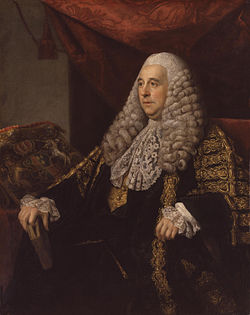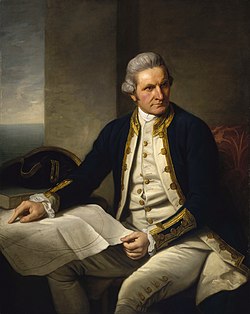Top Qs
Timeline
Chat
Perspective
Nathaniel Dance-Holland
English portrait painter (1735–1811) From Wikipedia, the free encyclopedia
Remove ads
Sir Nathaniel Dance-Holland, 1st Baronet RA (8 May 1735 – 15 October 1811) was an English painter and politician.
This article needs additional citations for verification. (June 2007) |
Remove ads
Early life
The third son of architect George Dance the Elder, Dance (he added the 'Holland' suffix later in life) studied art under Francis Hayman, and like many contemporaries also studied in Italy. There he met Angelica Kauffman and painted several historic and classical paintings.
Career
On his return to Britain, he became a successful portrait painter. With Hayman and his architect brother, George, he was one of the founding members of the Royal Academy in 1768.[citation needed] He was commissioned to paint King George III and his queen, plus Captain James Cook and actor David Garrick. His group portrait The Pybus Family (1769) is in the collection of the National Gallery of Victoria, Melbourne, Australia.[1]
In 1790, he gave up his artistic career and became Member of Parliament for East Grinstead in Sussex. He served this seat until 1802 when he moved to Great Bedwyn in Wiltshire, serving until 1806.[citation needed]
In 1807 he moved back to East Grinstead, serving until he died in 1811. He was made a baronet in 1800; the title became extinct on his death.[2]
Remove ads
Family
He was married to Harriet, the daughter of Sir Cecil Bishopp, 6th Baronet and the widow of Thomas Dummer, for whom his brother had designed the house at Cranbury Park, near Winchester.[3] They lived at Little Wittenham Manor in Berkshire (now Oxfordshire).[4] His wife survived him until 1825.[3] His nephew, Sir Nathaniel Dance, was an East India Company officer famous for his actions at the naval Battle of Pulo Aura in 1804.
Gallery
- Tobias Smollett, 1764
- Edward, Duke of York, 1765
- Timon of Athens, 1767
- Christian VII of Denmark, 1768
- Earl Camden, c.1768
- Portrait of George III, 1768
- The Pybus Family, 1769
- Samuel Barrington, 1770
- Lady Clive, c. 1770–74
- Lord North, 1773
- David Garrick, 1774
- Portrait of James Cook, c. 1775
- Martha Ray, 1777
Remove ads
Notes
References
External links
Wikiwand - on
Seamless Wikipedia browsing. On steroids.
Remove ads




















